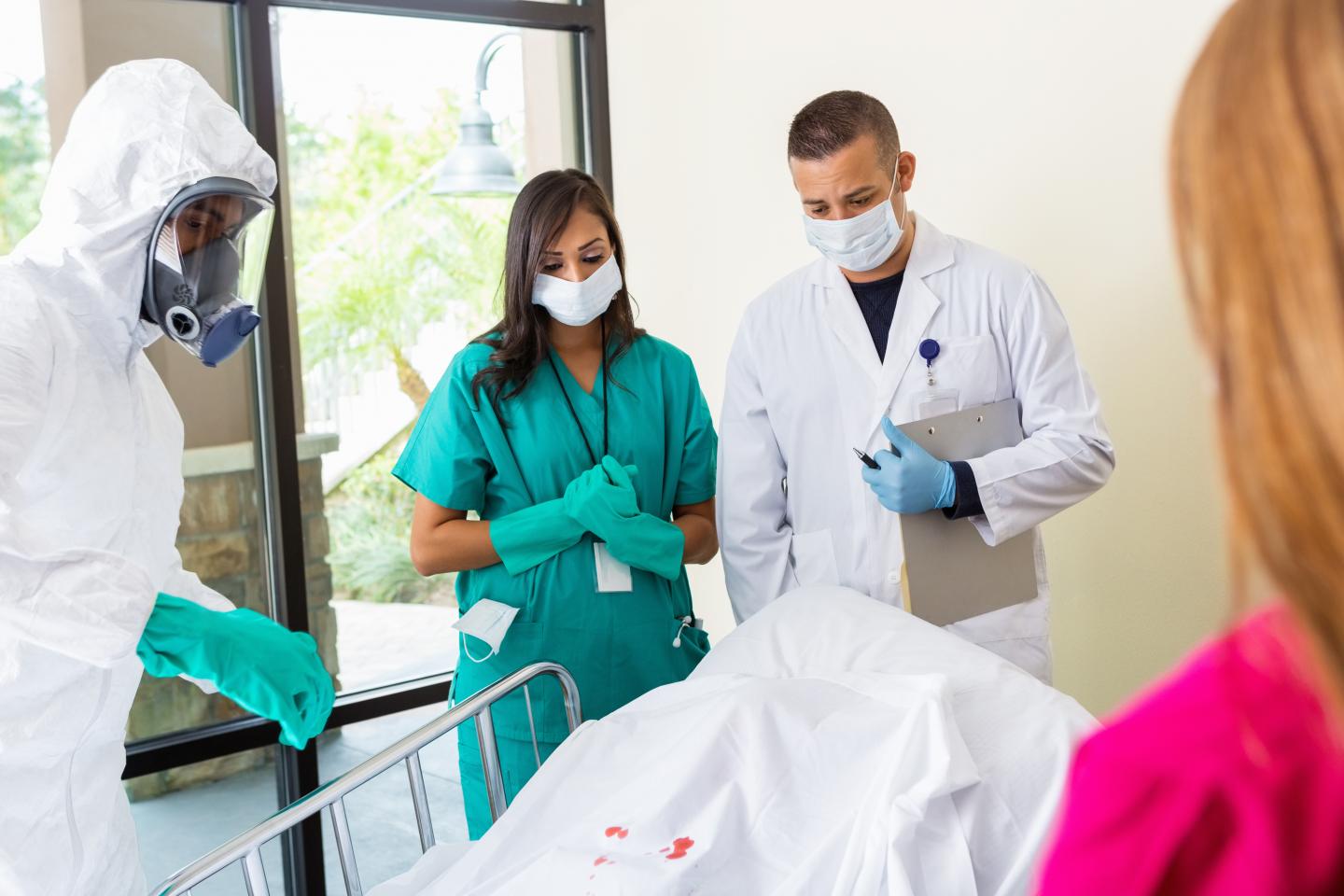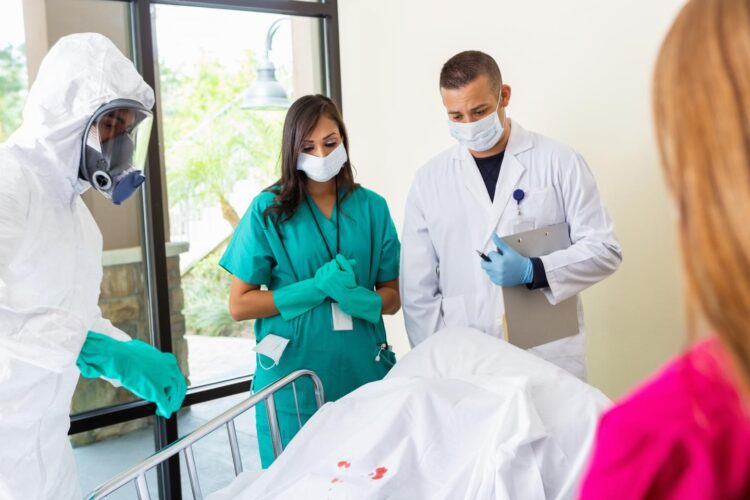
Credit: ATS
April 29, 2020 – Early reports of COVID-19 symptoms and the compelling need to quickly identify treatment options and curb the growing number of critically ill patients have led to erroneous and potentially dangerous comparisons between COVID-19 and other respiratory diseases like high altitude pulmonary edema, or HAPE.
In “COVID-19 Lung Injury and High Altitude Pulmonary Edema: A False Equation with Dangerous Implications,” the authors urge clinicians to rely on scientific evidence to guide treatment. The paper was posted early online in the Annals of the American Thoracic Society.
There are some similarities between COVID-19 and HAPE as there are similarities between COVID-19 and other respiratory illnesses that cause respiratory failure: very low oxygen levels in the blood, significant difficulty breathing, the degree to which there is stiffness in the lungs, and abnormal findings on chest CT scans. However, there are fundamental differences between COVID-19 and HAPE.
“HAPE develops when people ascend to high altitude. The low oxygen levels in the atmosphere cause low oxygen levels in the air sacs of the lungs,” said Andrew Luks, MD, professor of medicine in the Division of Pulmonary, Critical Care and Sleep Medicine at Harborview Medical Center and the University of Washington. “In all people, this leads the blood vessels in the lungs to constrict and raises the blood pressure in the lungs (pulmonary artery pressure). In people who develop HAPE, this response is excessive.
There is far too much vasoconstriction and far too great a rise in pulmonary artery pressure, all of which lead fluid to leak out of the blood vessels into the lung tissue, but this occurs with no inflammation.”
“In lung injury due to COVID-19, the virus attacks the cells that make up the air sacs of the lungs. This leads to a big inflammatory response that damages the air sacs (alveoli), leading fluid to leak out of the blood vessels even under much lower pressures, causes the alveoli to collapse, interferes with gas exchange and makes the lungs stiffer and harder to expand than normal. “
These fundamental differences necessitate different treatment approaches. While treatment with oxygen can resolve HAPE symptoms, oxygen alone is ineffective for the lung injury associated with COVID-19. Nifedpine and acetazolamide, two medications used to treat altitude sickness, can have dangerous consequences in COVID-19 patients.
“If given to a patient with lung injury due to COVID-19, it [nifedpine] has the potential to actually worsen oxygen levels in the blood and to lower systemic or whole body blood pressure,” said Dr. Luks.
Treating with acetazolamide can cause a host of problems, among them “fatigue of the diaphragm, causing the blood to become more acidic, and at high enough concentrations in the blood, impairing the transport and elimination of carbon dioxide, all of which will make patients even more short of breath.”
COVID-19 has affected how the medical community shares information and what the community is learning about the disease can change quickly. Clinicians and families are looking for data to help care for patients. Dr. Luks and his co-authors warn that without careful scrutiny, misinformation can quickly spread. Now more than ever, it is critical that clinicians rely on the data accumulated over time and scientific evidence related to treating acute lung injury.
###
About the Annals of the American Thoracic Society
The AnnalsATS is a peer-reviewed journal published by the American Thoracic Society. The Journal delivers up-to-date and authoritative coverage of adult and pediatric pulmonary and respiratory sleep medicine and adult critical care. The scope of the Journal encompasses content that is applicable to clinical practice, the formative and continuing education of clinical specialists and the advancement of public health. The journal’s impact factor is 4.026.
Editor: Colin Cooke, MD, MS, associate professor in the department of internal medicine at the University of Michigan.
About the American Thoracic Society
Founded in 1905, the American Thoracic Society is the world’s leading medical association dedicated to advancing pulmonary, critical care and sleep medicine. The Society’s 15,000 members prevent and fight respiratory disease around the globe through research, education, patient care and advocacy. The ATS publishes four journals, the American Journal of Respiratory and Critical Care Medicine, the American Journal of Respiratory Cell and Molecular Biology, the Annals of the American Thoracic Society and ATS Scholar.
Media Contact
Dacia Morris
[email protected]
Related Journal Article
http://dx.





